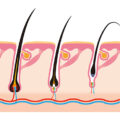Last updated on June 3, 2024
[starbox]
Hair transplants can undoubtedly work wonders for many patients looking to tackle thinning hair and hair loss. Revolutionary treatments can give a confidence boost to those experiencing hair loss. But every would-be hair transplant patient must know that hair transplants are effective treatments, not miraculous cures. In addition, there are limitations to what hair transplant surgeries can achieve. Here we look at the realistic results hair transplant patients can expect from procedures.
For patients who are completely bald
Let’s be honest and upfront about this straight off the bat: hair transplants are not possible for completely bald people. Such treatments require the harvesting of hair follicles from a specific area of a patient’s scalp known as the donor area. If a patient is completely bald, there will be no hair follicles for surgeons to harvest, nothing for them to work with, so a hair transplant cannot occur.
For patients with minor hair loss
The news is much better for patients with available donor hair. A hair transplant can help turn the tide of hair loss, recreate their hairline, and boost their hair density. Hair transplant procedures can help bring back what looks like a fuller head of hair for many people.
However, ethical hair transplant surgeons will carefully manage the expectations of these patients. If the patient thinks that the procedure will restore his hair to how it looked in his high school photos, they’re likely to be disappointed, especially if hair loss is significant. The procedure will always seek to achieve the best appearance of hair density, working with the available supply of donor hair.
The Illusion of Density
The illusion of density is a term often associated with hair transplants because, in reality, restoring a patient’s full head of hair is not achievable. Instead, the most skilled surgeons will place grafts in the problem area to give the illusion of hair density, making it look like a fuller head of hair but not because it is one.
Hair types affect hair transplant results
Everyone has different hair types in terms of colour, calibre, and curl, which will impact the appearance of a hair transplant. For example, thicker and wavier donor hair can achieve a better illusion of density. And the contrast between the patient’s hair and skin can also play a vital role in the final result.
The lesser the hair loss, the greater the density
Hair transplant surgeons know they must use a patient’s available resources wisely. They’ll consider whether increasing hair coverage or hair density is likely to deliver the most satisfying results. Patients with limited hair loss are likely to have enough donor hair to ensure their grafts add thickness to their problem areas.
More often, patients with advanced or severe hair loss have a choice between:
- Increasing hair density — usually focused at the front of their scalp along the hairline at the expense of bald or thinning areas further back or;
- Coverage — in which the hair transplant will aim to achieve complete scalp coverage in a natural but not so dense way.
The 50% rule
As already mentioned, a hair transplant does not seek to give the patient a full head of hair. Instead, the illusion of density is the aim. And, crucially, only 50% of a patient’s original density is required to achieve that illusion.
The total number of hairs you have on your head makes up your hair density, and there are three levels: thin, medium, and thick. Unfortunately, many patients don’t know they are suffering from hair loss until around half of their hair density is lost. Perhaps a patient will notice thinning when they see their hair under a harsh light or when another person, a barber maybe, calls their attention.
Either way, a hair transplant can produce noticeable improvements by re-establishing slightly more than 50% hair density in the affected area.
Looking long-term
Most patients can expect further hair loss during their lifetime, with many male patients matching the Norwood 6 or 7 level. As hair loss progresses, it will reach a large area of thinning hair or bald scalp at a particular stage, which follicles from the donor region could never cover.
Doctors and patients must manage the individual limitations of finite donor supply over a lifetime. That’s why the best hair transplant surgeons will think ahead, strategically placing the appropriate number of follicles at specific angles and direction to give their patients a transplant that considers the hair loss they are likely to experience in the future.
Hair transplants are as much art as science
Every hair transplant patient wants the work they’ve had done to look natural and be undetectable. But how realistic is that?
Much depends on the surgeon’s mastery of the art and science of hair transplantation. It is high precision work. The best surgeons will instinctively know where to place grafts for the best results.
That’s why it’s important for hair transplant patients to choose their physician with care. Experienced and skilled hair transplant surgeons best appreciate how hair grows at different angles and the direction and orientation of each graft. They also pay attention to natural hair groupings and natural spiralling in the recipient area.
In addition, they have a higher degree of artistry to recreate cowlicks, whorls in crowns, widow’s peaks and other unique hair features and undulations –all of which require precision and expertise to create a satisfactory cosmetic outcome.








